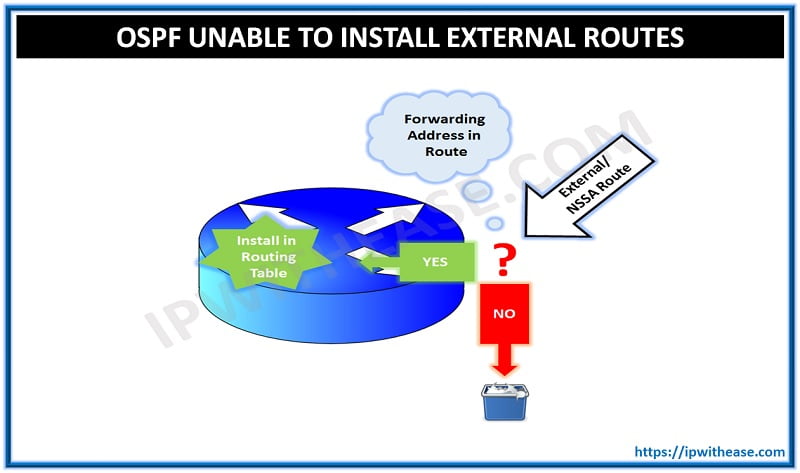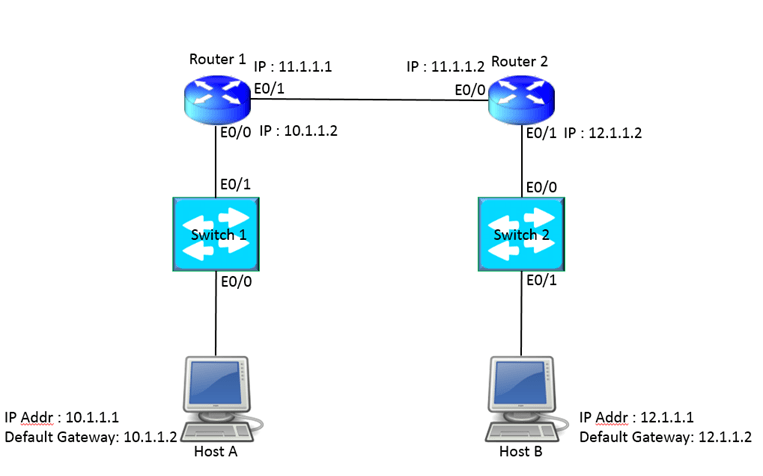Table of Contents
OSPF uses various types of bits within its packet headers and Link State Advertisements (LSAs) to communicate specific information between routers. The OSPF bit types are significant because they play a critical role in the operation, efficiency, and flexibility of the OSPF routing protocol. In today’s topic we will learn about OSPF in general, 15 bit types in OSPF and function of OSPF each bit type.
Distribution of routing information within a single autonomous system is larger networks is performed using WAN based protocols such as OSPF, RIP etc. Some of these routing protocols are based on link state algorithms OSPF is one of them which uses link state algorithm to calculate shortest path tree based on routing table database.
What is OSPF
OSPF is a link state discovery routing protocol. It is designed to run an internal single autonomous system. Each OSPF routers in a network maintains identical database to describe topology of autonomous systems. From OSPF routing database shortest path tree is constructed. In the event of topological changes, OSPF quickly utilizes the minimum routing protocol traffic. OSPF supports equal cost multi-pathing. Area routing capability is there to enable additional level of routing protection and reduction in network traffic. OSPF routing is based on destination IP address found in IP packet header.
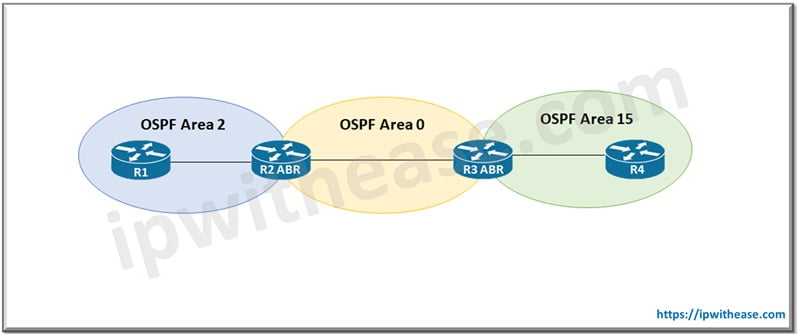
We will look more in detail about OSPF bit types with location in upcoming section.
OSPF BIT Types
OSPF bit types are fundamental to how OSPF operates, ensuring that the protocol can function effectively in diverse and complex network environments. They help in managing routing information, reducing unnecessary traffic, and ensuring the stability and efficiency of the network.
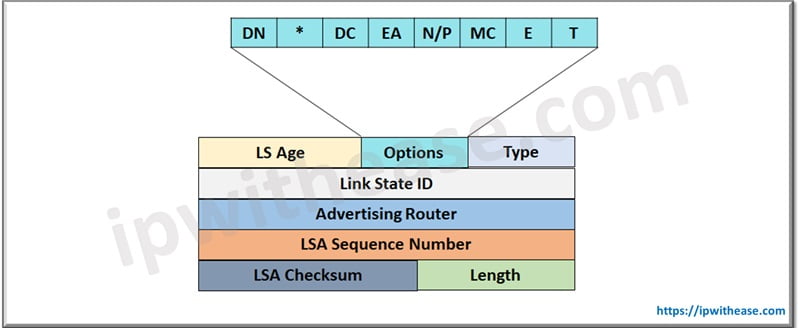
Here are the key OSPF bit types:
E-bit
OSPF areas can be configured as ‘Stubs’ and AS-external-LSAs will not flood into Stud areas this is represented with E-bit in OSPF options field. To ensure configuration consistency of stub areas all routers interfacing such area must have E-bit clear in their Hello packet.
M-bit
Each router database description contains an indication that there are more packets to flow using an M-bit. The M-bit is set to off when database exchange process is over.
I-bit and MS-bit
The initialize (I), more (M) and Master (MS) bits in options field and DD sequence number container in last database description packet arrived from the neighbour is used to determine if next database description packet received from neighbour is unique or duplicate.
B-bit
B-bit is set whenever router is actively attached to two or more area even if it is not attached to OSPF backbone.
V-bit
In router-LSA is set only if router is the endpoint of one or more fully adjacent virtual links having Area A as their transit area. V-bit setting enable other routers in Area A to discover if area supports transit traffic.
Related: OSPF LSA Types: The Ultimate Guide
R-bit
Allows for multi-homed hosts to participate in routing protocol.
V6-bit
Specializes R-bit
MC-bit
Describes whether IP multicast datagrams are forwarded as per specifications.
N/P-bit
Describes handling of type-7 LSAs.
EA-bit
Describes router willingness to forward /receive external-attributes-LSAs.
DC-bit
Describes router handling of demand circuits.
DN-bit
Is used to prevent loops and it is located on LSA header in MPLS VPN environments when OSPF is used as PE-CE protocol.
N-bit
Is used in hello packets by OSPF NSSA routers.
P-bit
Is used in NSSA external header. It allows ASBR to signal that the ABR router between (0, NSSA area) should translate LSA type 7 to LSA type 5 to be sent to OSPF backbone
Check the summarized table below:
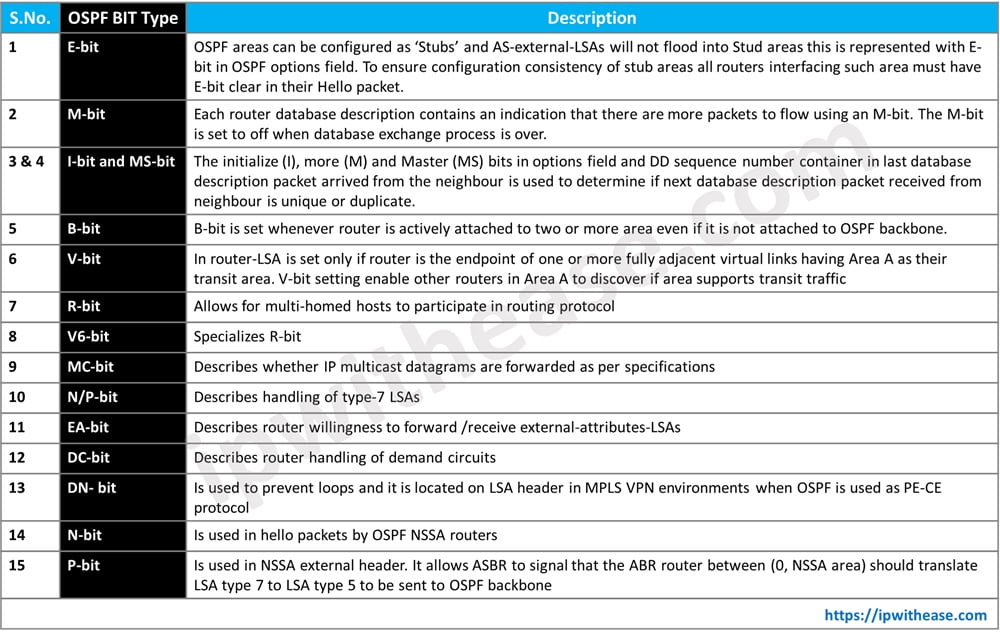
ABOUT THE AUTHOR

You can learn more about her on her linkedin profile – Rashmi Bhardwaj

